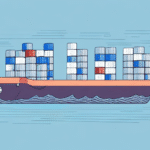Understanding CBM (Cubic Meter) in Shipping
CBM, or cubic meter, is a fundamental unit of measurement used to calculate the volume of a shipment. It plays a critical role in international trade, as shipping costs are often determined based on both the volume and weight of the cargo. Accurate CBM calculations ensure efficient use of space and help in estimating shipping expenses effectively.
What is CBM?
CBM stands for cubic meter and represents the volume that a shipment occupies. Unlike weight, which measures how heavy the cargo is, CBM measures the amount of space it takes up. This distinction is important because shipping costs frequently depend on both the volume and weight of the cargo.
How to Calculate CBM
Calculating CBM involves measuring the length, width, and height of the cargo in meters and then multiplying these three dimensions together. The formula is:
CBM = Length (m) x Width (m) x Height (m)
For example, if a package measures 2 meters in length, 1.5 meters in width, and 1 meter in height, its CBM would be:
CBM = 2 x 1.5 x 1 = 3 cubic meters.
Shippers often use CBM calculators provided by freight companies or reliable online tools to simplify this process and ensure accuracy.
The Importance of CBM in International Shipping
Impact on Shipping Costs
CBM significantly influences the overall cost of shipping. Carriers use CBM to determine how much space your cargo will occupy on a vessel, airplane, or truck, which directly affects pricing. Larger volumes typically cost more, but some carriers may offer volume discounts for bulk shipments. According to industry reports, accurate CBM calculations can reduce shipping costs by up to 5% by optimizing space utilization (Source).
Compliance with Regulations
Many countries have specific regulations regarding the size and weight of cargo that can be transported. Accurately calculating CBM helps ensure compliance with these regulations, avoiding delays and potential fines. Additionally, proper CBM measurements aid in adhering to international standards set by organizations such as the International Maritime Organization (IMO).
Units of Measurement in Shipping
Weight vs. Volume
Shipping costs often consider both the weight and volume of the cargo. Weight is typically measured in kilograms or pounds, while volume is measured in cubic meters or cubic feet. Carriers may charge based on the greater of the two values, a principle known as the chargeable weight.
TEU and Other Units
Another important unit is the Twenty-foot Equivalent Unit (TEU), which standardizes the capacity of container ships and terminals. One TEU equals the volume of a 20-foot-long container and is commonly used to describe the capacity of large vessels and ports.
Advantages and Disadvantages of CBM
Benefits
- Maximizes space utilization: Ensures efficient use of available cargo space.
- Transparent pricing: Provides clear insight into how shipping costs are calculated based on volume and weight.
- Efficient planning: Facilitates better logistics and supply chain management.
Potential Drawbacks
- Cost implications: May be costlier for shipments with large volumes but low weight.
- Complex calculations: Can be challenging to accurately calculate for irregularly shaped or oversized items.
Maximizing Space and Efficiency with CBM
Packing Techniques
Using standardized packaging, pallets, and crates can help maximize space. Efficient packing reduces empty spaces, lowers CBM, and consequently, shipping costs. Techniques such as nesting, stacking, and leveraging modular packaging can further optimize space utilization.
Use of Technology
Technological advancements, such as automated CBM calculation tools and cargo optimization software, enhance accuracy and efficiency in space utilization. Tools like CargoClub offer solutions to optimize cargo space, reducing CBM and costs.
CBM in Freight Forwarding
Role in Quotations and Planning
Freight forwarders use CBM to provide accurate shipping quotes and plan the logistics of transporting goods. By knowing the CBM, they can allocate appropriate space and determine the best mode of transport, ensuring cost-effective and timely delivery.
Common Misconceptions and Clarifications
CBM vs. Weight
A common misconception is that shipping costs are determined solely by weight. In reality, both weight and volume (CBM) are critical factors. Carriers typically charge based on the higher of the two, known as the chargeable weight.
CBM in Other Industries
While CBM is essential in shipping, it is also used in other industries such as manufacturing and product packaging to optimize storage and transportation. Understanding CBM can lead to better inventory management and cost savings across various sectors.
Choosing the Right Shipping Company Based on CBM
Evaluating CBM Policies
When selecting a shipping company, review their CBM calculation methods and pricing policies to ensure transparency and accuracy. Clear CBM policies prevent unexpected costs and facilitate smoother logistics operations.
Ensuring Accurate Measurements
Choose a carrier that offers assistance with CBM calculations or provides tools to ensure your measurements are accurate. Accurate CBM measurements minimize the risk of unexpected costs and delays, leading to more efficient shipping processes.
Latest Trends in CBM Usage
Technological Advancements
Emerging technologies like AI and machine learning are improving the precision of CBM calculations and optimizing cargo space more effectively. These advancements enable real-time adjustments and better forecasting of shipping needs.
Future Outlook
As e-commerce continues to grow, the importance of accurate CBM calculations in logistics and supply chain management is expected to increase. This growth drives further innovation and efficiency, making CBM an even more integral part of global shipping operations.
Conclusion
CBM is a fundamental component of international shipping, influencing costs, compliance, and efficiency. By understanding and accurately calculating CBM, shippers can optimize their logistics, reduce expenses, and ensure the safe and timely delivery of goods. Staying informed about the latest trends and utilizing advanced tools can further enhance the effectiveness of CBM in shipping operations.




















